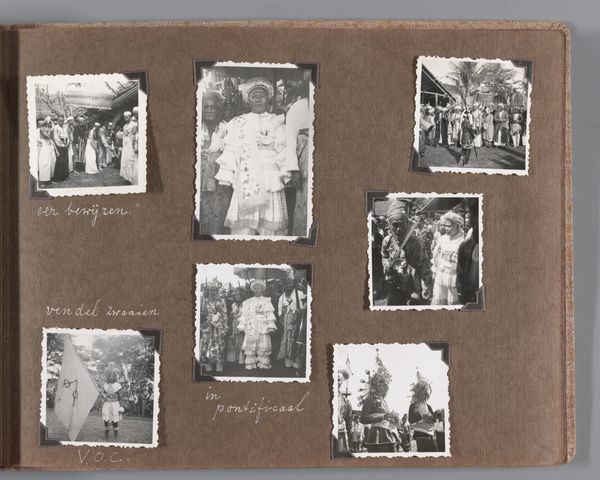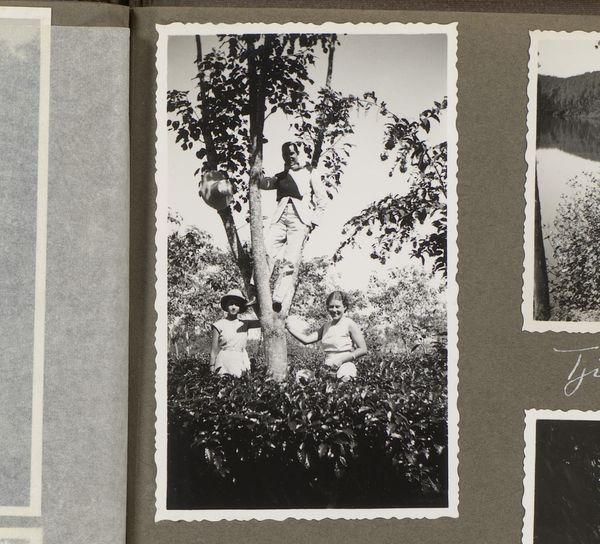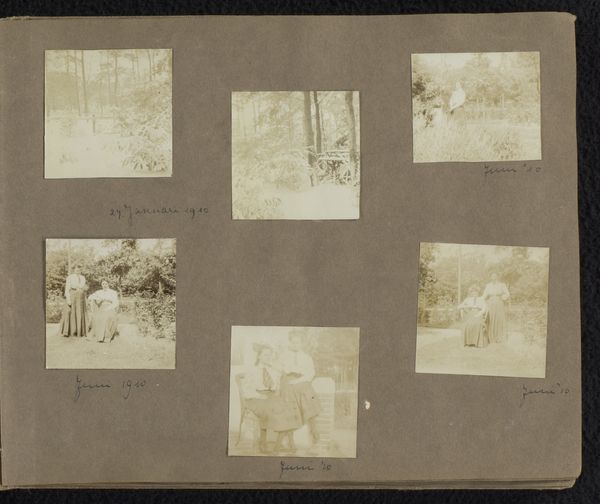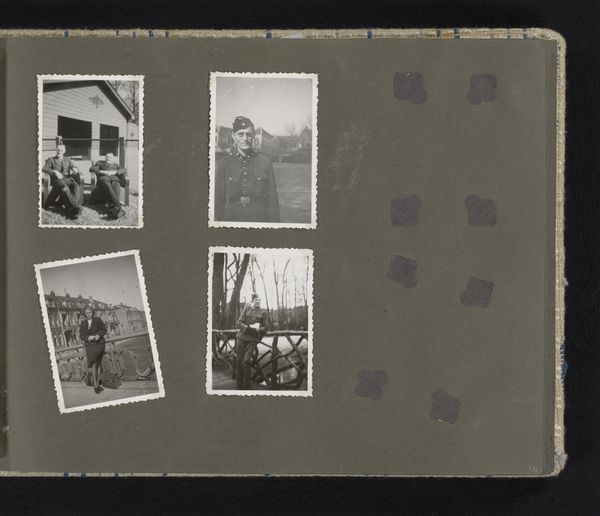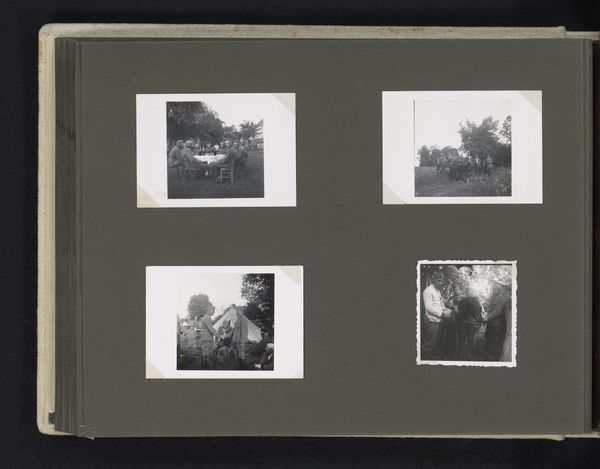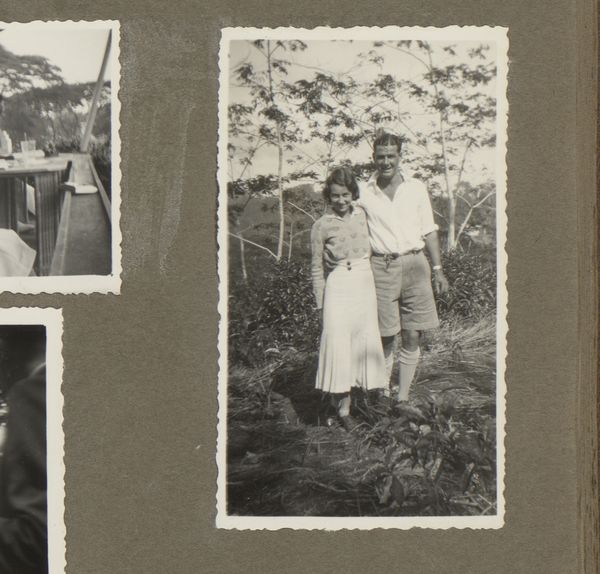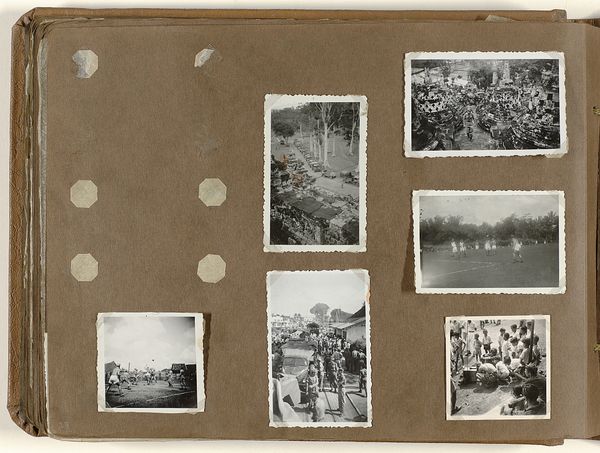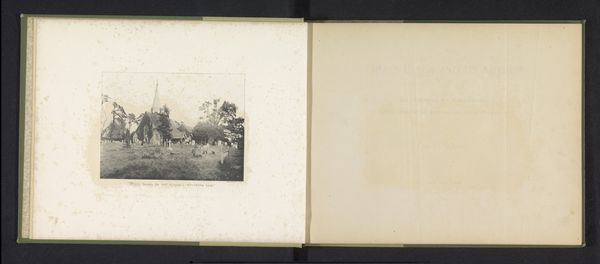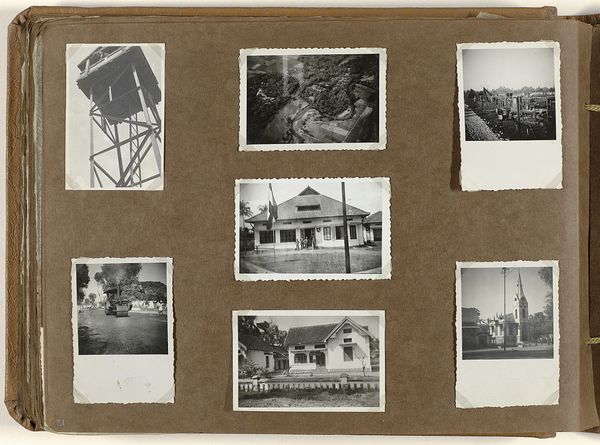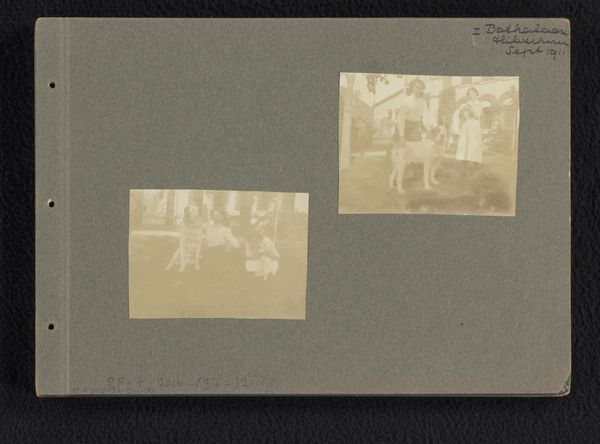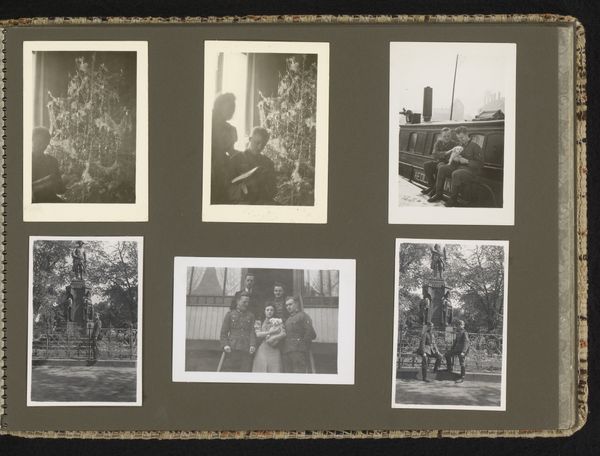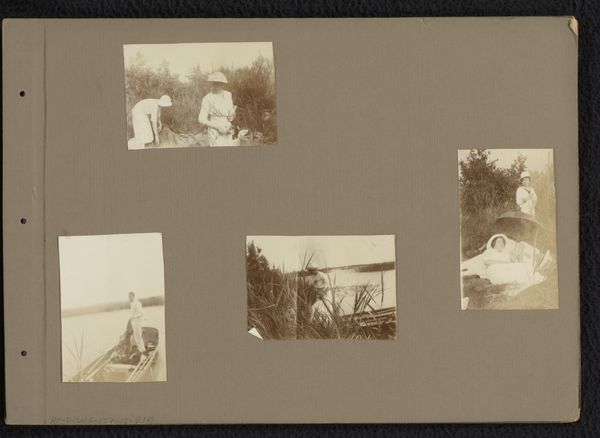
photography, gelatin-silver-print
#
portrait
#
landscape
#
photography
#
forest
#
group-portraits
#
gelatin-silver-print
Dimensions: height 110 mm, width 66 mm
Copyright: Rijks Museum: Open Domain
Editor: Here we have a gelatin silver print from 1933 entitled "Gezelschap met Dootje van Zijll de Jong in het bos, nabij Bandoeng" – "Company with Dootje van Zijll de Jong in the forest, near Bandoeng." It feels like a formal portrait set against an exotic backdrop. What stories do you see in this piece? Curator: It's easy to read this photograph simply as a portrait of colonial life, but let's delve a bit deeper. The photograph documents a social event within the context of Dutch colonialism in Indonesia. This photograph raises questions about power dynamics, the representation of identity, and the construction of place within a colonial framework. It's not merely a landscape; it's a staged encounter, a performance of identity in a colonized space. How does the landscape itself function in this image, do you think? Editor: I see what you mean! The individuals seem very deliberately posed, as if they’re showcasing their place and status within this 'exotic' locale, it feels almost unnatural. It contrasts so sharply with what I imagine a spontaneous moment might look like. Curator: Precisely. We should think about who had the power to produce and circulate these images, and whose narratives were privileged. What are the silences or absences within this representation? It also speaks to the ways in which photography was used as a tool of documentation but also of control, shaping perceptions of both the colonizer and the colonized. Editor: So by examining photographs like these, we are engaging with visual culture that served a specific agenda, right? It’s a way of unpacking historical narratives through a critical lens. I’m starting to see the importance of connecting art history with larger societal themes. Curator: Exactly! This image can be an entry point into larger discussions about colonialism, representation, and the legacies that persist today. We're not just looking at a picture; we are interrogating its relationship to broader social, political, and historical realities.
Comments
No comments
Be the first to comment and join the conversation on the ultimate creative platform.
